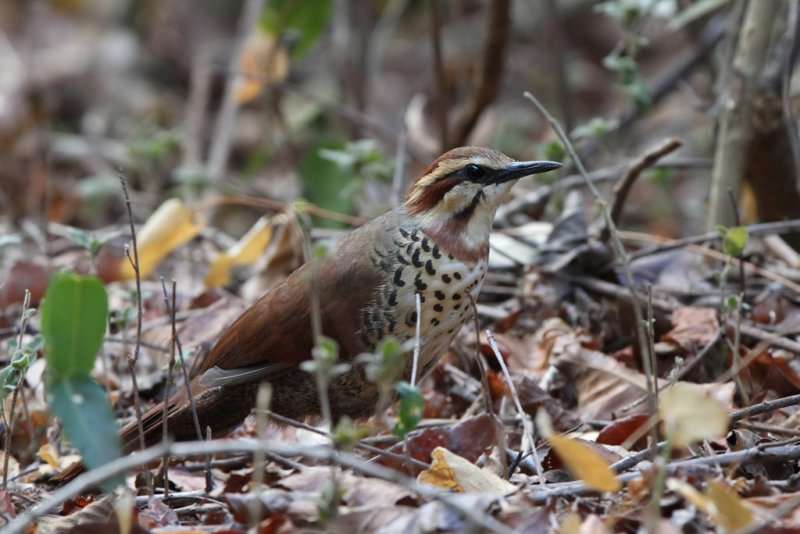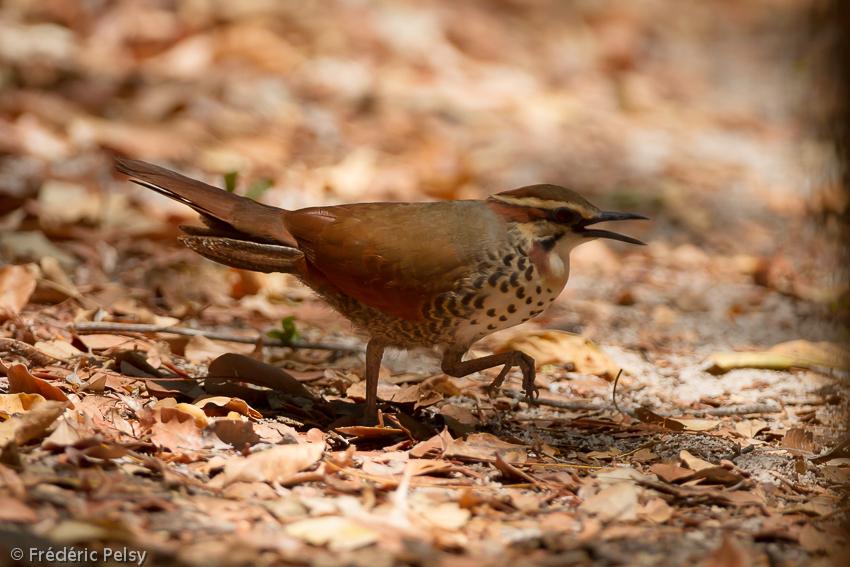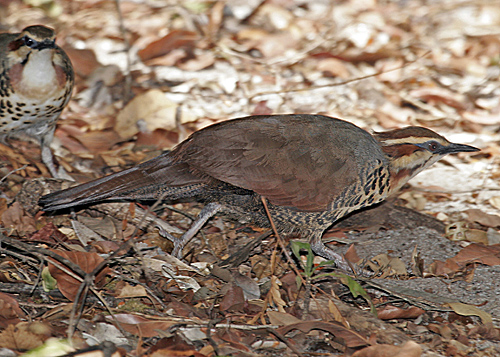
Mesitornis variegata
TAXONOMY
Mesites variegata I. Geoffroy Saint-Hilaire, 1838, Madagascar.
Monotypic.
OTHER COMMON NAMES
English: White-breasted roatelo; French: Mйsite variйe; German:
Kurzfuss-stelzenralle; Spanish: Mesito Pechiblanco;.
PHYSICAL CHARACTERISTICS
12 in (31 cm); male 3.5–4.0 oz (103–111 g), female lighter.
Upperparts rufous brown; throat, eyebrows, and breast pale
cream; black crescent-shaped markings on sides of breast and
upper belly; nape may be gray.
DISTRIBUTION
Madagascar. Small patches of forest in the west and north of
the island, and Ambatovaky in the east.
HABITAT
In the west and north: dry, deciduous forest on sandy soils,
with sparse understory and thick leaf litter. In the east: lowland
humid forest. Sea level to 1,150 ft (350 m).
BEHAVIOR
Terrestrial and secretive. Sedentary; usually found in family
groups that defend territories year round.
FEEDING ECOLOGY AND DIET
Feeds among leaf litter and low vegetation, occasionally probing
the soil, searching for invertebrates and plant seeds.
REPRODUCTIVE BIOLOGY
Thought to be monogamous. Nests 3–9 ft (1–3 m) above the
ground on a platform of sticks, October through April. Female
incubates one to three eggs, period unknown. The young remain
with parents for up to a year post-fledging.
CONSERVATION STATUS
Vulnerable.
SIGNIFICANCE TO HUMANS
Hunted opportunistically, if irregularly, due to their small size.
Photo Gallery of - White-breasted mesite




 Animalia Life
Animalia Life